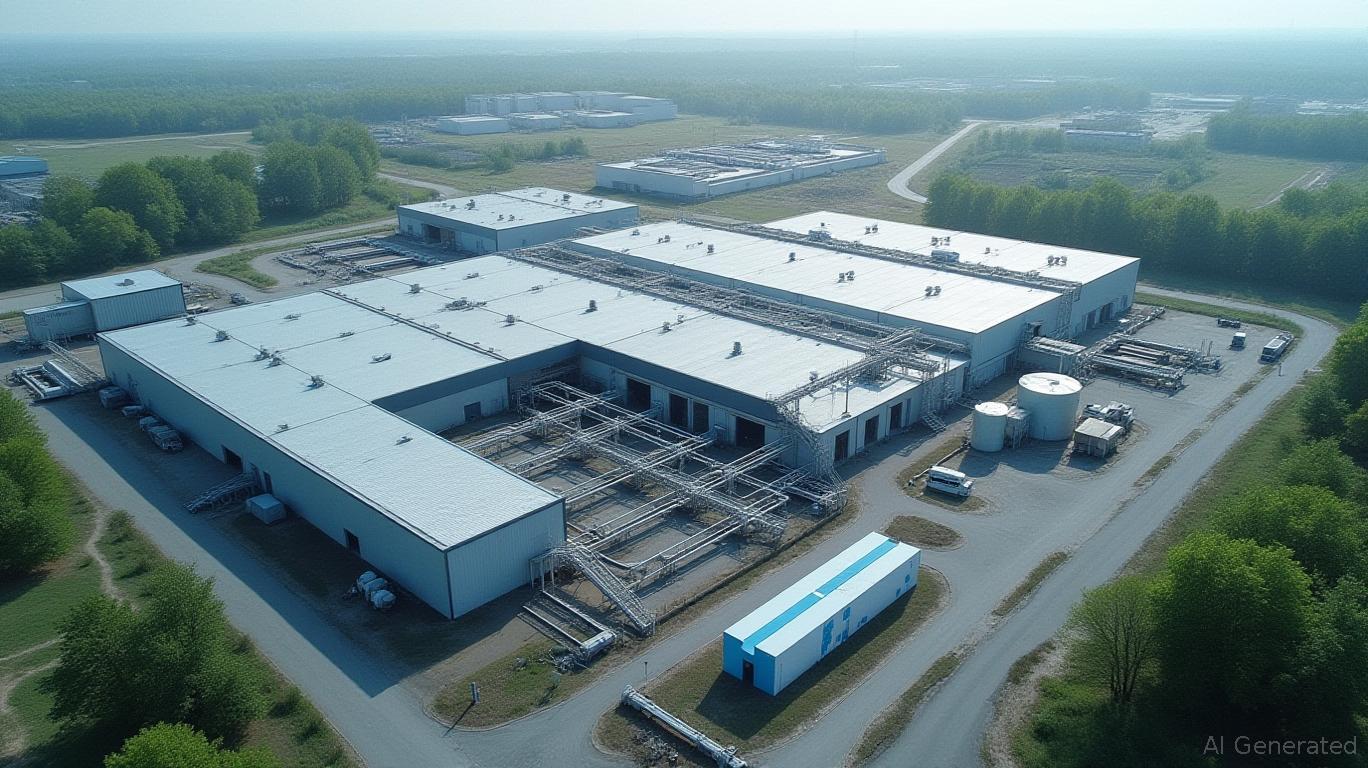United Utilities: Navigating Regulatory Crosscurrents for Long-Term Value
The water utility sector, a classic "regulatory rollercoaster," demands investors to balance near-term risks with the certainty of long-term demand. United Utilities, the UK's largest water company by market capitalization, faces a pivotal juncture as it navigates Ofwat's Price Review 25 (PR25) while executing a £13 billion investment plan. While regulatory headwinds and customer bill backlash loom large, the company's focus on climate resilience and infrastructure modernization could underpin sustainable returns. The question is: can United Utilities turn regulatory uncertainty into valuation upside?

The Regulatory Tightrope
United Utilities' current regulatory framework under PR24 (2020–2025) has already imposed strict cost controls, with Ofwat's final determinations in April 2025 emphasizing alignment between risk and return. The company's proposed £13 billion investment plan for 2025–2030—funding leak repairs, storm overflow reductions, and climate-resilient sewer systems—will now be scrutinized under PR25. Ofwat's draft proposals, released in early 2025, propose average annual bill hikes of £19 (excluding inflation) to fund £88 billion of industry-wide investments. United's response, while constructive, offers little detail on how it will navigate the trade-off between customer affordability and infrastructure spending.
The final PR25 decision, due in December 2025, could redefine the company's financial trajectory. If Ofwat caps returns or restricts expenditure, United's earnings growth could falter. Conversely, favorable outcomes on risk allocation or cost recovery mechanisms could unlock value.
Financials: Growth Amid Growing Pains
United's FY2025 results show resilience: revenue rose 10% to £2.15 billion, with net profit surging 109% to £264.7 million, driven by higher regulated asset base returns. However, the 4.9% EPS miss relative to estimates hints at execution risks. The company's 12% profit margin, up from 6.5%, suggests cost discipline—but this may be unsustainable if inflation or project delays bite.
The £525 million customer support package, covering 1 in 6 households, is a prudent move to preempt political backlash. Yet, with unmetered bills rising to £752 in 2025/26 (a 27% jump for some customers), public and regulatory scrutiny remains a wildcard.
Valuation: A Regulated Growth Story?
United's valuation hinges on its ability to convert regulated investments into permitted revenue. Its price-to-earnings ratio (P/E) of 18x (based on FY2025 results) is above peers, reflecting expectations of stable cash flows. However, the risk is that Ofwat's final PR25 decision could compress margins if cost overruns are disallowed.
The long-term case rests on two pillars:
1. Climate Resilience as a Regulatory Priority: Governments increasingly mandate utilities to invest in flood defenses and water quality. United's plan to reduce storm overflow spills by 60% by 2030 aligns with Ofwat's sustainability metrics, potentially justifying higher allowed returns.
2. Asset Health and Customer Outcomes: Ofwat's “Roadmap for enhancing asset health understanding” rewards firms that demonstrate improved infrastructure performance. United's focus on leak reduction and river protection could position it as a regulatory “good bet.”
Risks to Consider
- Regulatory Uncertainty: PR25's final terms could delay or dilute returns. The two “warning signs” noted in its financial report—likely related to project execution or regulatory penalties—merit closer scrutiny.
- Customer Pushback: While metering offers savings, the 27% bill increase for unmetered households risks political scrutiny, particularly if inflation outpaces Ofwat's projections.
- Economic Sensitivity: A recession could strain customer affordability, forcing the company to divert funds to support programs at the expense of shareholder returns.
Investment Thesis: A Wait-and-See Approach
For income investors, United's 4.5% dividend yield (as of June 2025) offers stability, but the payout's sustainability depends on PR25 outcomes. Growth investors should await clarity on Ofwat's final determination before committing capital. Key triggers include:
- A December 2025 decision that permits full cost recovery for climate investments.
- Evidence that infrastructure projects are on track to meet Ofwat's “ambition assessments.”
- Signs that customer support costs won't erode margins.
In the interim, the stock's 6.5% year-to-date performance (as of June 2025) suggests markets are pricing in regulatory tailwinds. However, a “wait until December” stance seems prudent to avoid overpaying for uncertainty.
Conclusion
United Utilities embodies the duality of regulated utilities: a necessity-driven business with a clear long-term mandate, yet vulnerable to short-term regulatory vagaries. While the company's investments in climate resilience and customer engagement are commendable, investors must weigh near-term execution risks against the promise of a “green” regulated monopoly. For those with a multi-year horizon, the stock could offer asymmetric returns—if Ofwat's rules ultimately reward vision over volatility.

Comments
No comments yet